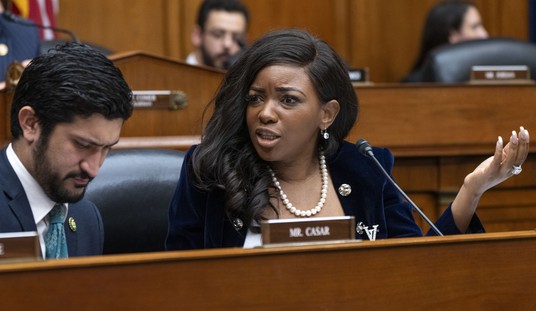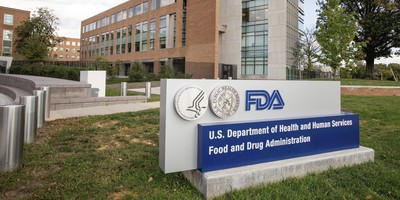This past Thursday, the Obama Administration quietly introduced a new endeavor intended to address the environmental effects of manmade objects that travel at supersonic speeds. White House Press Secretary Jay Carney revealed the program, adding that, “In the eight years preceding this Administration, no attention was given to residual supersonic atmospheric disturbances, especially on healthcare costs. This President will step up where others before him would not.”
Put simply, how do we repair the sound barrier?
The massive program, funded at an estimated $8.7 billion, is comprised of both research and policy advancements. The science will be provided in a joint effort between two national laboratories, the National Center for Atmospheric Research (NCAR) in Boulder, Colorado and Fermilab in Batavia, Illinois. Regulatory measures will be implemented and enforced by the Environmental Protection Agency (EPA) out of Washington, D.C.
EPA Administrator Gina McCarthy stated in a written release Friday that, “We are proud to accept this responsible position as world citizens in owning up to the effects of our historical aggression with air speed.” Andrea Saul, spokesperson for NCAR, added that, “The sound barrier is there for a reason. It is high time that we understand the cumulative effects of breaking it.”
The Department of Energy’s Fermilab communicated their commitment to the program with actions much louder than words. On July 23, the high-energy physics lab took delivery of a 50-foot-wide electromagnet that will be devoted to the research project. The enormous device traveled 3,200 miles over 35 days across land, oceans, and rivers to make its way to its Illinois destination (see photos and videos of the big move here). Fermilab scientists will use the device to study the positions of air particles at the moment of the transonic zone, the point at which an object moves from subsonic to supersonic. “This task is a welcome focus for us after retiring the Tevatron proton-antiproton accelerator two years ago.”
Recommended
That transonic moment of breaking the sound barrier is known by aviators as “Mach 1.” But because air is elastic, the actual speed of sound is not a constant. Ambient temperature and other atmospheric conditions determine the speed at which sound travels. At Standard Sea Level conditions, Mach 1 is 761.2 miles per hour. But at a typical airline cruising altitude of 30,000 feet, the lower air temperature reduces Mach 1 to about 678 miles per hour.
The higher the ambient temperature, the higher the speed required for an object to reach Mach 1. So the scientists of Fermilab and NCAR are considering ways to leverage the variability of Mach 1 to help the sound barrier evade inadvertent breakage. In an ironic twist, Global Warming could actually provide the advantage of fewer occurrences of aircraft breaking the speed barrier. Both scientists and policy makers will together wrestle with the complex question posed by Representative Hank Johnson (D-GA), “What would be the impact on the environment if Congress were to statutorily raise the sound barrier?”
Could it tip over the island of Guam for example?
The first manned aircraft credited with breaking the sound barrier was piloted by Chuck Yeager on October 14, 1947. Yeager accomplished this historical milestone while flying Bell Aircraft’s rocket plane, the famous X-1, over the Mojave Desert. That position in the sky (at Latitude 35.9318095, Longitude -116.2278577and Altitude 45,214 feet), known to pilots as the “Yeager rip” can still be felt as turbulence when a plane passes through it. Concerns for the environmental impact of Sound Barrier Breakage are rumored to be the actual motivation for mothballing the Space Shuttle fleet in 2011.
Everyday citizens can expect to ultimately feel the impact of new EPA regulations as well. Common devices like bullwhips are suspected of leaving static atmospheric disturbances. As Scientific American addresses the controversy, “It has long been thought that the crack results from the tip of the whip traveling fast enough to break the sound barrier and create a sonic boom.”
The EPA has already begun discussions with environmentalist thought leader Al Gore about developing a series of Public Service Announcements to inform the public and to caution them about the damaging effects of supersonic speeds. When reached by phone, the former Vice President and filmmaker shared his newfound expertise on the topic, “Most of the smaller residual sonic disturbances seem to be concentrated in some of the least populated areas, like ranches and rodeo arenas.” He further quipped that, “This truth is looking pretty inconvenient as well.”
Scientists from both NCAR and Fermilab used the preferred “Sound Barrier Disturbance” or SBD to reference the program, which so far has no official title. To complement the assignments of scientists and EPA regulators, Jay Carney announced that Carolyn Williams Palit will transition from her role as Chemtrails Czar to the new position of Sound Barrier Czar (See Carolyn Williams Palit’s groundbreaking treatise on chemtrails here). And Palit is already devoted to the task. Within minutes of Carney’s announcement, Palit tweeted that the larger breaks caused by military aircraft will receive priority attention before addressing consumer-level violations. “Every SBD leaves a tear. Never been repaired. If not now, then when? If not us, then who?”
The initial focus of NCAR will be to reconsider the previously settled argument against the theory that thunder is the sound of lightning breaking the sound barrier. NCAR scientist Mary Hayden explained the goal of “re-discovering whether lightning strikes break the sound barrier. We have serious doubts that thunder is merely the harmless sound made by the rapid expansion and contraction of air around a lightning bolt.” In an email exchange with Townhall, Czar Palit added, “The NCAR research will inform our decision of whether to deploy devices that eliminate lightning throughout the globe or if we should accept SBDs as natural occurrences.
And the fact that even at this late point in the article you don’t know that I’m kidding says more about Obama and environmental foolishness that it does about your sense of humor or mine

























Join the conversation as a VIP Member